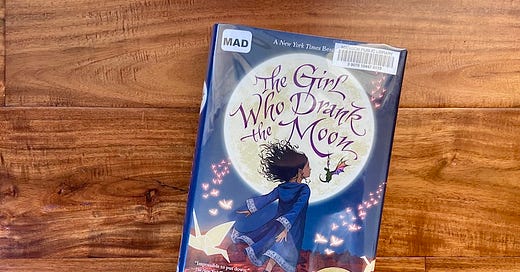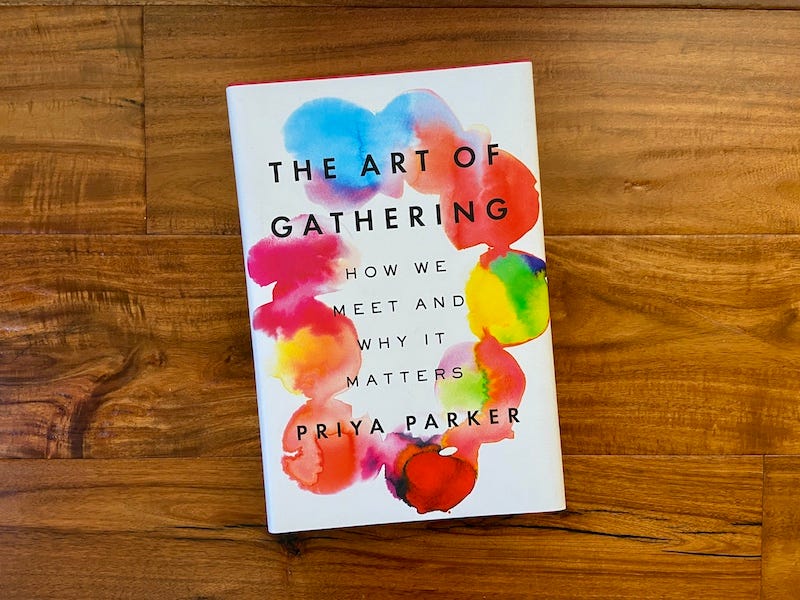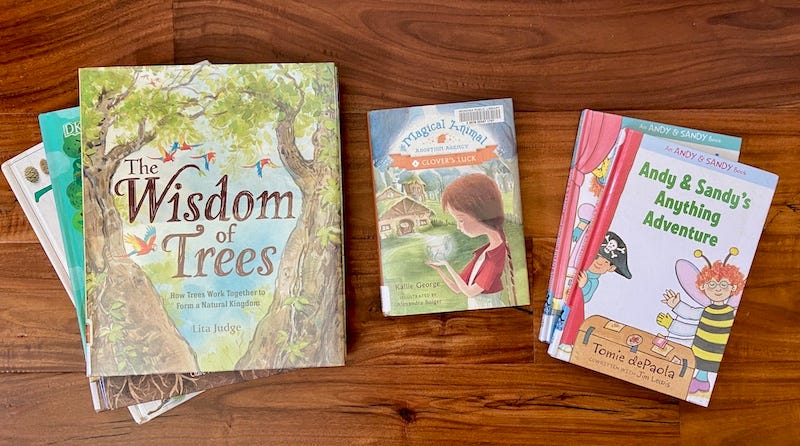Even with an extra day thanks to Leap Year, there’s just not enough days in February to get a grip on the month before it slips into March.
This year, we didn’t even have to wait for March for the weather to come in like a lion: we had a tornado come through our area on February 8th, the first recorded tornado in February in Wisconsin (a record we could have done without). We are absolutely fine — in fact, to the best of my knowledge there was not a single human injury during the storm — but Scott now runs the municipal electric utility that was affected, which involved some long hours for him as power lines got rebuilt and electricity restored for the entire small city.
And in the classic way of terrible things being juxtaposed against great things, two days later Ashley Brooks and I were able to meetup for a day of coffee and conversation in LaCrosse, which we try to do at least once a year.
It’s all things, all at once. Always.
(Just like a favorite songs says.)
Here’s What I Read in February:
The Girl Who Drank the Moon: A Novel
by Kelly Barnhill
I truly enjoyed The Ogress and the Orphans last fall by the same author, and enjoyed diving into this other novel that won the 2017 Newberry Medal for “the most distinguished contributions to American literature for children”. The Girl Who Drank the Moon is beautifully written, has a stunning premise that’s set up very quickly in the book, and features truly delightful characters. I really enjoyed it. That said, the plot was a little meandering at times, and I didn’t always grasp quite where the author was going at certain moments. Ultimately, I think it’s a great book that mixes magic and care and morality (much like Ogress), but I do wish the storytelling had been a little tighter.
Goodreads | Bookshop | Libro.F
The Midnight Library: A Novel {audiobook}
by Matt Haig
Content warning: the book discusses suicide, mental health, drug overdose, and alcoholism.
I’ve seen this cover everywhere for a few years now and began to listen on a day trip to LaCrosse to see Ashley Brooks earlier this month. Nora Seed is dreadfully unhappy with her life. When she loses her cat, gets let go from a job, and finds out her estranged brother came to town last week and didn’t visit her — all in the span of a day — she decides she no longer wants to live. Nora attempts suicide… but ends up in the in-between in the Midnight Library, where she’s able to try out different versions of the life she could have led until she finds the one she actually wants. I found the premise intriguing and enjoyed listening along, but did find some of the “life lessons” in the book to be delivered a bit heavy-handedly.
After thoroughly enjoying Meryl Streep as the narrator for Tom Lake — her voice was exactly right for the part, I kept questioning if Carey Mulligan was the right answer for this book. Ultimately, I think Mulligan’s voice is too confident for the role of Nora Seed, and sometimes the dissonance between the words of the novel and the forthright voice of Mulligan pulled me out of the story of a bit.
A reminder: you can listen to up to 8 hours of audiobooks free each month if you already pay for Spotify Premium!
Goodreads | Bookshop | Libro.FM | Spotify Premium
The Art of Gathering: How We Meet & Why It Matters
by Priya Parker
If you’ve ever gone to a conference or corporate event and thought “what was the point of that?”, it could be that the hosts needed to read this book. I’ve had this nonfiction title on my list for awhile now, and I was excited to receive it as a Christmas gift from Scott. Our church has chosen to focus on the theme of “Holy Community” for the year, and the book dovetails nicely with that theme. Priya Parker is an expert in creating custom gatherings for organizations, corporations, and conferences. Trained in conflict resolution, Parker specializes in making sure a gathering means something, and the attendees leave the event — whether dinner party or diplomatic summit — changed. Parker walks the reader through several principles for a good gathering, like choosing a good purpose, opening well, and excluding intentionally in order to shape a gathering in such a way that people feel loved and cared for before, during, and after. I’m interested to carry this way of crafting a gathering back into the world.
What could have made this book better: a worksheet to fill out to help you plan your next gathering. I think taking the ideas of non-fiction and integrating them into our lives is the hardest part, and something so simple could have really brought the lessons into practice more easily.
Goodreads | Bookshop | Libro.FM
As part of a small group for Lent, I’m working my way through How To Live: What the Rule of St. Benedict Teaches Us About Happiness, Meaning, and Community by Judith Valente. We’re reading about four chapters a week, which is doable, but is definitely cutting into my other reading time.
What I’m Reading with the Kids:
We’re reading books about trees for school, as well as a bunch of early readers to help Arthur practice his developing skills. So far, the Andy & Sandy books by Tomie dePaola are the just-right blend of easy and approachable, mixed with new words to stretch him. Lots of early readers I’ve picked up seem to have really terrible word choices (science? beautiful? guidebook?) for kids who are still learning the basic phonograms, so if you have any beginner books that you recommend, please share!
Scott and the kids finished The Wild Robot #3: The Wild Robot Protects, and we started reading the first book in the Magical Animal Adoption Agency series called Clover’s Luck. It’s my the same author that wrote Heartwood Hotel, which we adore, and so far this series is entertaining us all — so much so that Scott read ahead before heading out on a work trip so he wouldn’t miss what happened next.
We also listened to Little House on the Prairie together on audio, and I’ve fallen down a few rabbit holes in researching how much of the story is fact vs. fiction. There’s a lot of debate considering how popular the books have been. Fair warning: if you read this with kids, be prepared to talk about how Ingalls Wilder describes and treats the “Indians” in the text, as well as how the land was opened up to pioneers in order to force the Native Americans out.
What I’m Reading Next:
I’m in the middle of The Young Unicorns by Madeleine L’Engle, but after that I have no idea! But I guess I’d better go and find out before I send another newsletter next month.








Have you listened to the Wilder podcast yet? If not, it would a good addition to your Laura Ingalls Wilder rabbit holes!!
I adore Tomie dePaola and have somehow never read the Andy & Sandy books! I'll look into them for Conlin. As always, LaCrosse was a delight (even if browsing the bookstore together always adds exponentially to our tbr lists!)